Sponge cake is a classic and beloved dessert known for its light and airy texture that melts in your mouth. This delightful treat has been enjoyed by people of all ages for generations and holds a special place in the hearts of bakers and dessert enthusiasts alike.
Here are some more useful languages for you:
- Spanish: https://bncake.com/perfeccion-clasica-del-bizcocho/
- Portuguese: https://bncake.com/perfeicao-classica-de-bolo-esponja/
- Hungarian: https://bncake.com/szivacs-torta/
- Ukrainian: https://bncake.com/бісквіт/
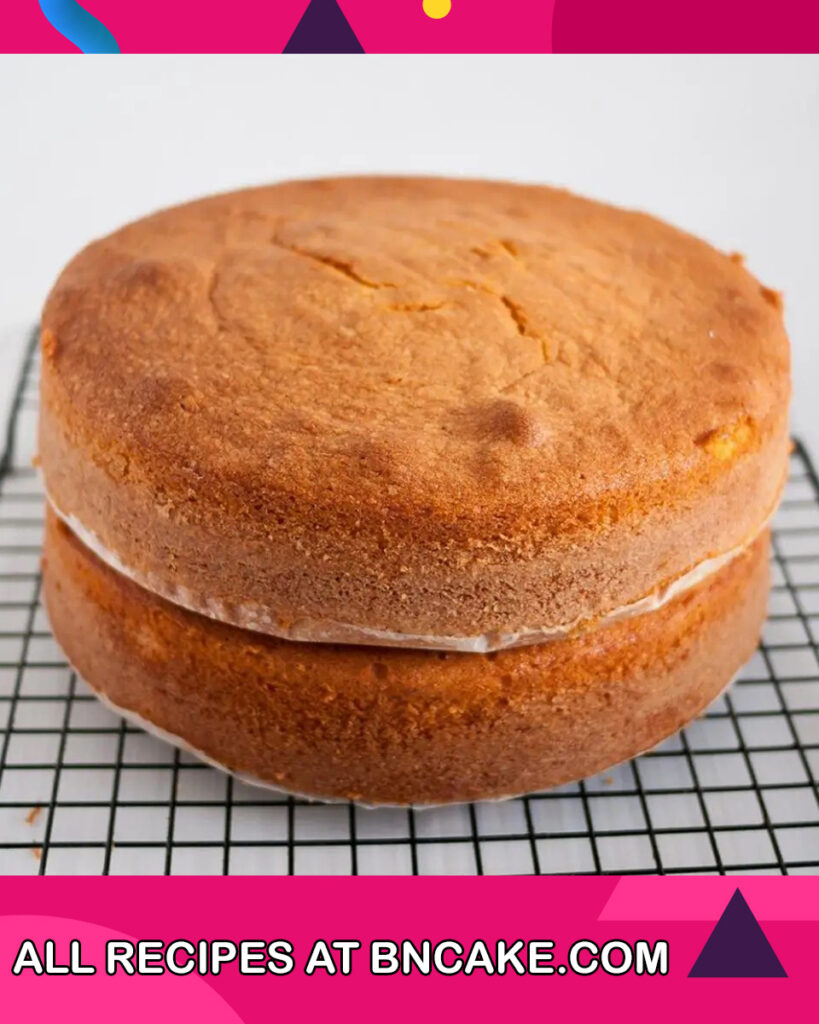
The magic of a sponge cake lies in its simple yet unique composition, with eggs and sugar whipped to a fluffy consistency, creating a soft and spongy crumb. Its versatility allows for various flavorings and accompaniments, making it a perfect canvas for creativity in the kitchen.
Whether served plain with a dusting of powdered sugar, adorned with fresh fruits and whipped cream, or layered with luscious fillings, the possibilities are endless. Sponge cake is a staple at tea-time gatherings, celebrations, and special occasions, bringing joy and sweetness to every moment.
In this journey through the world of sponge cake, we’ll explore different variations, tips for baking success, and the pleasure of savoring this timeless dessert. So, let’s dive into the world of fluffy indulgence and discover the wonders of sponge cake!
What Is Sponge Cake?
Sponge cake is a type of light and fluffy cake known for its delicate texture and airy crumb. It is made with simple ingredients, typically including eggs, sugar, flour, and sometimes flavorings such as vanilla or lemon zest. The unique characteristic of sponge cake comes from the method used to incorporate air into the batter. Instead of using chemical leavening agents like baking powder or baking soda, sponge cake relies on the air beaten into the eggs and sugar mixture to create volume.
The traditional method involves whisking eggs and sugar together until they become light, pale, and fluffy. Then, sifted flour is gently folded into the mixture, maintaining the airiness. The absence of butter or oil in the batter allows the cake to rise and create a soft, tender crumb.
Sponge cake is versatile and can be enjoyed on its own, used as a base for layer cakes, or served with various fillings and frostings. It is often paired with fresh fruits, whipped cream, or jams to enhance its flavor and add moisture. Sponge cake is a classic dessert that is enjoyed in many different variations and is popular in various cuisines around the world.
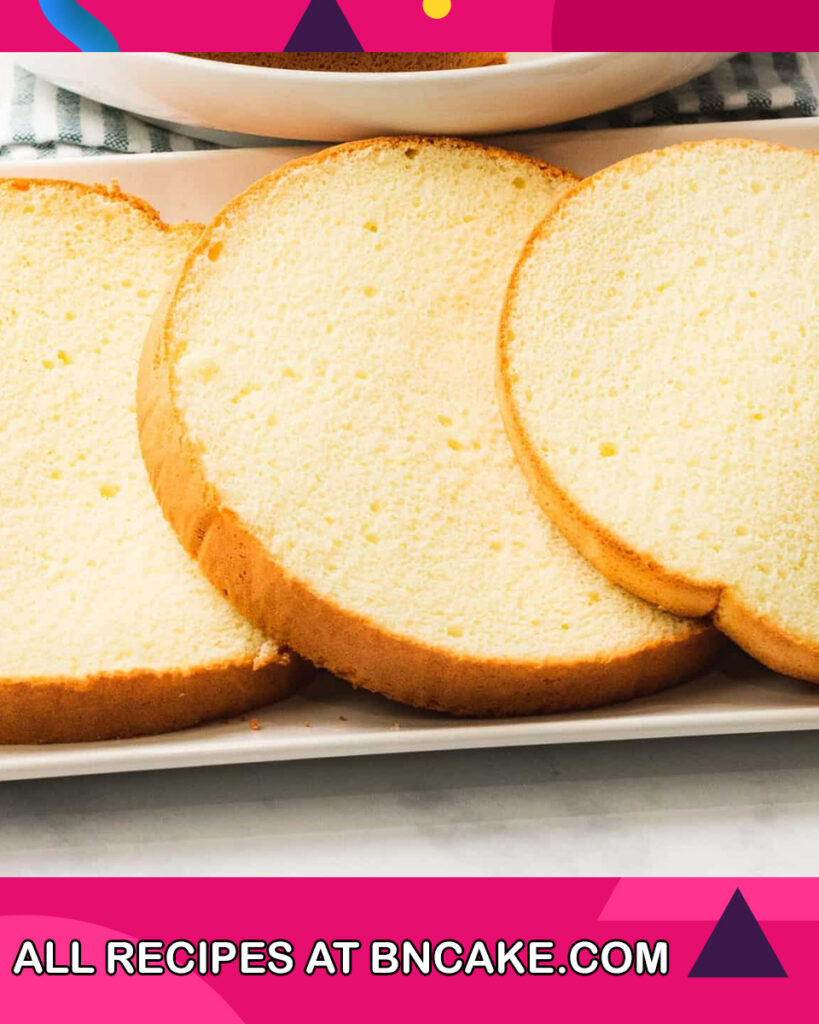
Why You Will Love Sponge Cake Recipe?
- Light and Fluffy Texture: This recipe yields a sponge cake with a wonderfully light and airy texture. It has a delicate crumb that melts in your mouth, making each bite a delightful experience.
- Versatility: This sponge cake serves as a perfect base for various desserts. You can use it to create layered cakes, trifles, or even serve it on its own with a dusting of powdered sugar. The versatility of this recipe allows you to unleash your creativity in the kitchen.
- Simple Ingredients: The recipe calls for basic pantry staples, including eggs, sugar, flour, and flavorings. You won’t need any complicated or hard-to-find ingredients, making it convenient to whip up this cake whenever the craving strikes.
- Easy Preparation: The recipe is straightforward and easy to follow, even for novice bakers. With clear instructions and minimal steps, you’ll have a beautifully baked sponge cake in no time.
- Customizable Flavors: While the recipe provides a classic vanilla sponge cake base, you can easily customize the flavors to suit your preferences. Add a hint of lemon zest, almond extract, or other flavorings to create your own signature sponge cake.
- Impressive Results: This sponge cake recipe consistently produces impressive results. Its light and spongy texture, combined with its beautiful appearance, will make it a standout dessert on any occasion.
- Enjoyment for All: Sponge cake is a crowd-pleaser that appeals to people of all ages. Whether you’re serving it at a birthday party, afternoon tea, or family gathering, this recipe is sure to be a hit.
Overall, this sponge cake recipe offers a delightful combination of simplicity, versatility, and deliciousness. It’s a go-to recipe that will never disappoint, leaving you wanting to make it again and again.
Ingredients You’ll Nedd For Sponge Cake
The following are the ingredients and quantities typically used in a basic sponge cake recipe:
- 4 large eggs
- 1 cup granulated sugar
- 1 cup all-purpose flour
- 1 teaspoon vanilla extract
- 1/4 teaspoon salt
Optional:
- 1 teaspoon baking powder (for added leavening)
Please note that the quantities mentioned above are for a general sponge cake recipe. It’s important to follow a specific recipe as ingredient quantities may vary depending on the desired yield or specific variations. Additionally, alternative ingredients or flavorings can be incorporated based on personal preference or the chosen recipe.
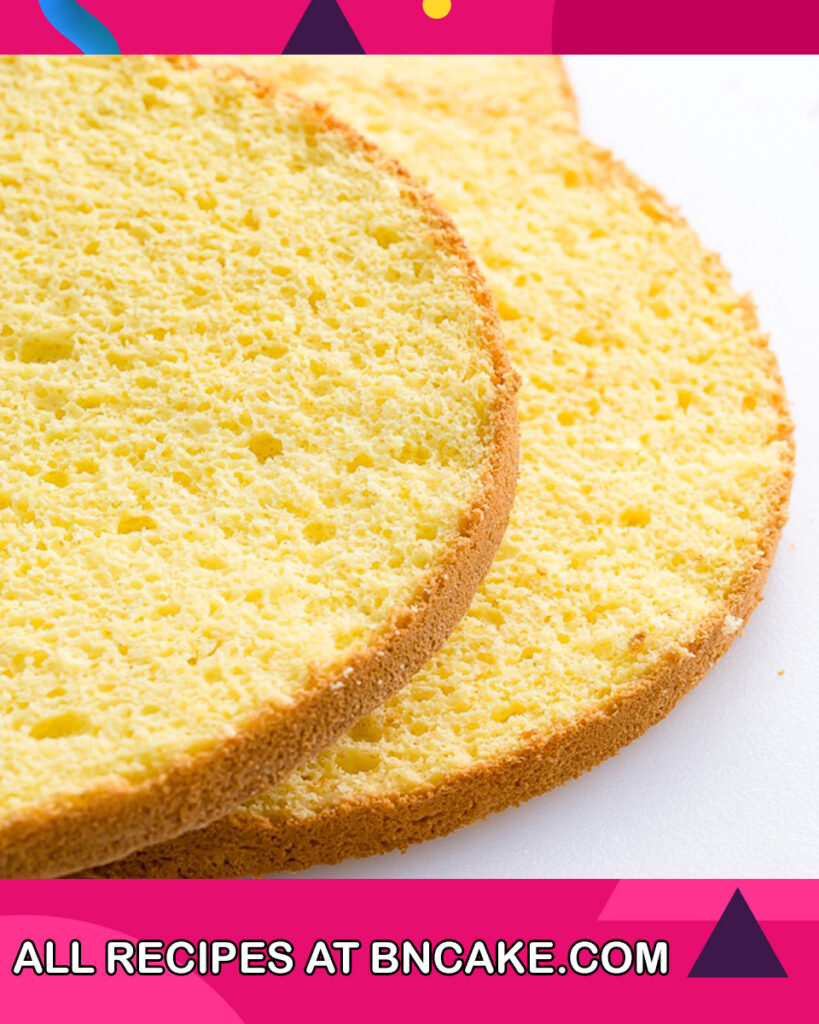
How To Make Sponge Cake
- Preheat the oven to 350°F (175°C) and prepare a 9-inch (23 cm) round cake pan by greasing it and lining the bottom with parchment paper.
- In a large mixing bowl, crack open 4 large eggs. Beat the eggs using an electric mixer or whisk until they become frothy and pale in color.
- Gradually add 1 cup of granulated sugar to the beaten eggs while continuing to beat. Beat until the mixture becomes thick and creamy, and the sugar is well incorporated.
- In a separate bowl, sift together 1 cup of all-purpose flour, 1/4 teaspoon of salt, and 1 teaspoon of baking powder (optional). This helps to ensure a smooth and airy texture in the cake.
- Gradually add the dry ingredients to the egg and sugar mixture. Gently fold them in using a spatula, taking care not to overmix. The goal is to incorporate the dry ingredients while retaining as much air as possible.
- Add 1 teaspoon of vanilla extract to the batter and gently fold it in until well combined.
- Pour the batter into the prepared cake pan, ensuring it is evenly spread.
- Bake in the preheated oven for approximately 25-30 minutes, or until the cake is golden brown on top, springs back when lightly pressed, and a toothpick inserted into the center comes out clean.
- Once baked, remove the cake from the oven and let it cool in the pan for a few minutes. Then, transfer it to a wire rack to cool completely.
Now, your basic sponge cake is ready to be enjoyed as is or used as a base for various desserts. Decorate it with powdered sugar, fresh fruits, whipped cream, or your preferred frosting, according to your taste and preference.
How To Serve
To serve sponge cake, follow these simple steps:
1. Cooling: Once the sponge cake is baked, allow it to cool completely. This ensures that the cake sets and holds its shape.
2. Slicing: Use a sharp knife or a cake slicer to cut the sponge cake into individual slices. The thickness of the slices can vary depending on personal preference.
3. Presentation: Place each slice of sponge cake on a dessert plate or serving platter. You can add a decorative touch by dusting powdered sugar on top of the cake or garnishing with fresh fruits, such as berries or sliced peaches.
4. Accompaniments: Sponge cake pairs well with a variety of accompaniments. Some popular options include:
- Whipped Cream: Serve the sponge cake with a dollop of freshly whipped cream on top. It adds a creamy and luxurious element to the cake.
- Fresh Fruits: Enhance the flavor and presentation of the sponge cake by serving it with a side of fresh fruits. Berries, sliced kiwi, or mangoes are excellent choices that complement the lightness of the cake.
- Sauces or Syrups: Drizzle a sauce or syrup over the sponge cake to add moisture and additional flavor. Options like chocolate ganache, fruit coulis, or caramel sauce work well.
- Ice Cream: For an indulgent treat, serve a slice of sponge cake with a scoop of your favorite ice cream. The contrast between the lightness of the cake and the creaminess of the ice cream creates a delightful combination.
- Tea or Coffee: Enjoy a slice of sponge cake with a cup of tea or coffee. The mild sweetness and airy texture of the cake complement the flavors of these beverages.
5. Enjoy: Serve the sponge cake to your guests or enjoy it yourself. Appreciate the delicate texture, subtle sweetness, and any additional flavors or toppings you’ve chosen to accompany the cake.
Remember, sponge cake is versatile and can be served in various ways. Feel free to experiment with different toppings, fillings, or sauces to create your own unique serving style.
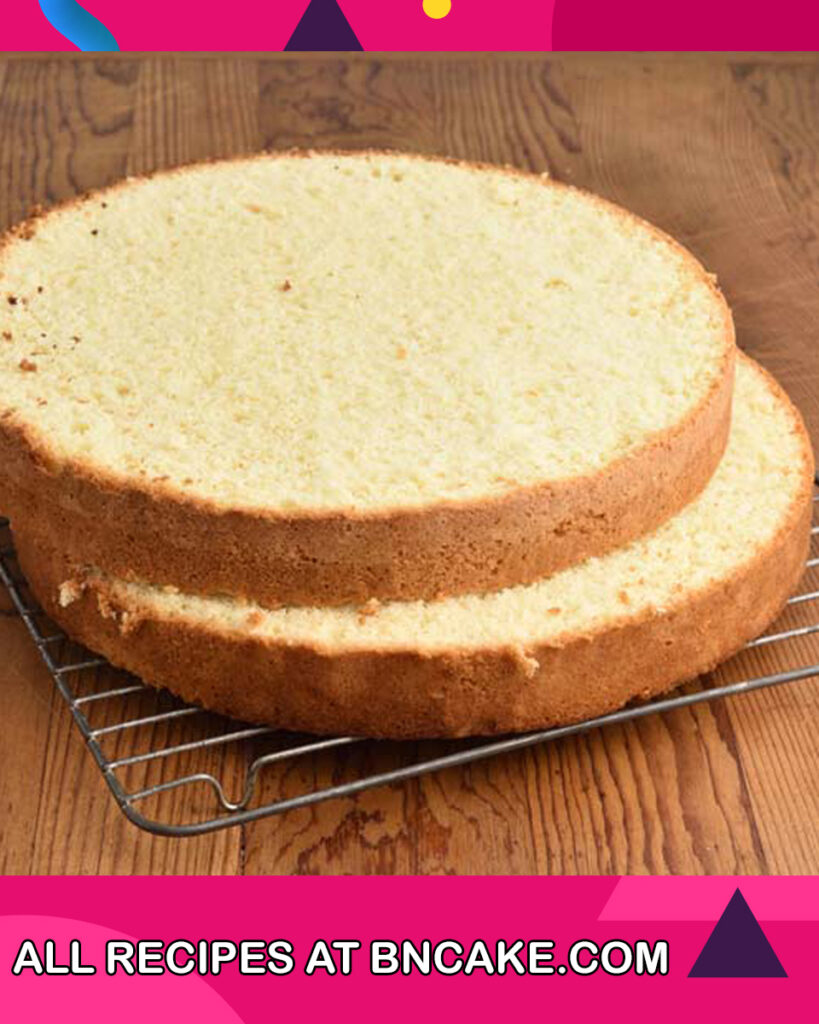
How To Store
To properly store sponge cake and maintain its freshness, follow these guidelines:
- Cool Completely: Allow the sponge cake to cool completely after baking. This helps to prevent condensation and maintain its texture.
- Wrap: Once the cake has cooled, wrap it tightly in plastic wrap or place it in an airtight container. This helps to seal in moisture and protect the cake from drying out.
- Refrigerate: For longer storage, place the wrapped or containerized sponge cake in the refrigerator. The cool temperature helps to preserve its freshness and extend its shelf life.
- Use within 2-3 Days: Sponge cake is best enjoyed when fresh. Consume it within 2-3 days of baking for optimal taste and texture.
- Avoid Moisture: Keep the sponge cake away from moisture, as it can make the cake soggy. Avoid storing it in the refrigerator with other items that release moisture, such as fruits or vegetables.
- Freezing: If you wish to store the sponge cake for a longer period, you can freeze it. Wrap the cake tightly in plastic wrap, followed by aluminum foil or place it in a freezer-safe container. Frozen sponge cake can be stored for up to 2-3 months.
- Thawing: To thaw frozen sponge cake, transfer it to the refrigerator and let it thaw overnight. Avoid thawing at room temperature, as it can cause condensation and affect the texture.
- Serve Fresh: Once the sponge cake has been stored and thawed, it’s best to consume it within a day or two for the best taste and texture.
Remember, sponge cake is delicate and can dry out quickly, so proper storage is crucial to maintain its quality. By following these guidelines, you can enjoy your sponge cake at its best for an extended period.
More Incredible Cake Recipes To Try
FAQ’s and Troubleshooting
FAQs About Sponge Cake:
Q: What is a sponge cake?
A: A sponge cake is a light and airy cake made with simple ingredients like eggs, sugar, flour, and flavorings. It gets its name from its sponge-like texture, which is achieved through the beating of eggs to create air bubbles that expand during baking.
Q: What makes a sponge cake light and fluffy?
A: The light and fluffy texture of a sponge cake is achieved by incorporating air into the batter. This is typically done by beating eggs (whole or separated) with sugar until they become frothy and pale in color. The air trapped in the eggs expands during baking, giving the cake its airy texture.
Q: Can I make a sponge cake without eggs?
A: While traditional sponge cakes rely on eggs to create the airy texture, there are eggless or vegan versions of sponge cake available. These typically use egg substitutes like applesauce, yogurt, or aquafaba (chickpea brine) to achieve a similar texture.
Q: What flavor variations can I try with a sponge cake?
A: Sponge cakes are versatile and can be flavored in various ways. You can add extracts like lemon, almond, or orange for a citrusy twist. Additionally, cocoa powder or melted chocolate can be incorporated for a chocolate sponge cake.
Q: How do I prevent a sponge cake from collapsing?
A: To prevent a sponge cake from collapsing, avoid opening the oven door during baking, as this can cause the cake to lose heat and collapse. Also, ensure the cake is fully baked before removing it from the oven, as an undercooked cake may collapse as it cools.
Q: Can I freeze a sponge cake?
A: Yes, sponge cakes can be frozen for future use. Wrap the cooled cake tightly in plastic wrap and then in aluminum foil or place it in an airtight container before freezing. Thaw the cake in the refrigerator before serving.
Q: How should I serve a sponge cake?
A: Sponge cake can be served as a simple dessert on its own or paired with various accompaniments like whipped cream, fresh fruits, sauces, or ice cream. It also makes a delicious base for layer cakes or trifles.
Q: How long does a sponge cake stay fresh?
A: Sponge cakes are best enjoyed fresh, within 2-3 days of baking. Properly stored in the refrigerator, they can maintain their freshness for a few days. However, the texture may start to dry out after this period.
Troubleshooting About Sponge Cake:
Q: Why did my sponge cake turn out dense and heavy?
A: A dense and heavy sponge cake can be caused by several factors. Overmixing the batter or not incorporating enough air into the eggs and sugar can lead to a dense texture. Additionally, using too much flour or baking the cake at too low of a temperature can result in a heavy cake.
Q: What should I do if my sponge cake sinks in the middle?
A: If your sponge cake sinks in the middle, it may not have been fully baked. Avoid opening the oven door too early during baking, as this can cause the cake to collapse. Ensure the cake is fully baked before removing it from the oven.
Q: Why did my sponge cake turn out dry?
A: A dry sponge cake can occur if it is overbaked or if there is not enough moisture in the batter. Be sure to follow the recommended baking time and temperature and avoid overmixing the batter, which can lead to a dry texture.
Q: What causes my sponge cake to have a rubbery texture?
A: A rubbery texture in a sponge cake can be the result of overmixing the batter, leading to the development of too much gluten. To avoid this, gently fold in the dry ingredients and avoid excessive mixing.
Q: Why is my sponge cake not rising?
A: A sponge cake may not rise properly if the eggs and sugar are not beaten enough to incorporate air into the batter. Be sure to beat the eggs and sugar until they are pale and frothy. Additionally, old or expired baking powder can also hinder the rise of the cake.
Q: How can I prevent my sponge cake from sticking to the pan?
A: To prevent sticking, it’s essential to properly grease and flour the cake pan before adding the batter. Alternatively, you can line the bottom of the pan with parchment paper to ensure easy removal.
Q: My sponge cake has a tunnel-like hole inside. What caused this?
A: A tunnel-like hole or large air pockets inside the cake can result from not properly tapping the cake pan to release air bubbles before baking. Gently tap the filled cake pan on the counter to remove excess air and even out the batter.
Q: What can I do if my sponge cake has a sunken top?
A: A sunken top can occur if the cake is underbaked or if the oven temperature is too low. Ensure the cake is fully baked by using a cake tester or toothpick inserted into the center; it should come out clean. Additionally, check that your oven is calibrated correctly for accurate temperature.
Q: How can I make my sponge cake more flavorful?
A: To enhance the flavor of your sponge cake, consider adding extracts such as vanilla, almond, or citrus zest. You can also incorporate other flavorings like cocoa powder or melted chocolate for a chocolate sponge cake.
Q: My sponge cake is too crumbly. How can I fix it?
A: A crumbly texture can result from overmixing the batter or using too much flour. To prevent this, gently fold in the dry ingredients and avoid overworking the batter. Additionally, ensure you measure the flour accurately to avoid adding too.
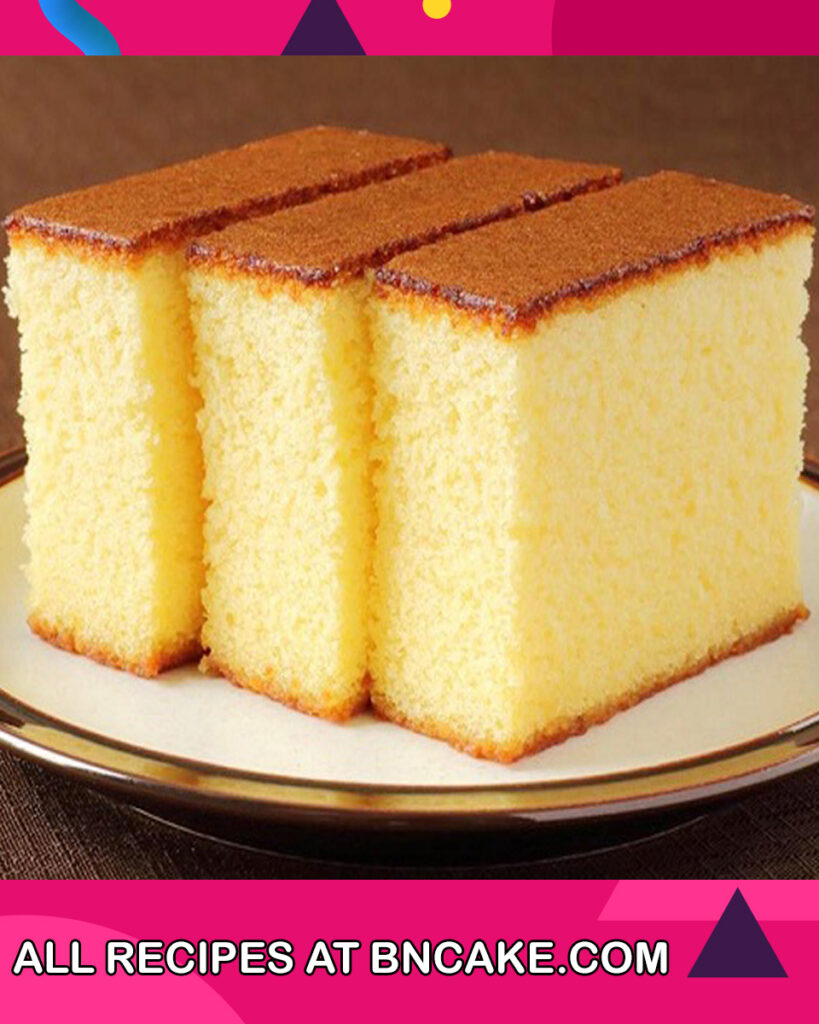
Note
Sponge cake is a delightful and airy dessert that has been enjoyed for generations. With its light texture and versatility, it’s a treat that suits any occasion. The key to a perfect sponge cake lies in beating the eggs and sugar to create that fluffy, frothy consistency. Gently folding in the dry ingredients ensures a soft and spongy cake without making it dense.
For an extra touch of flavor, you can add extracts like vanilla or zest of citrus fruits. The options are endless, and you can experiment with various flavorings to suit your preferences.
Once baked to perfection, let the cake cool in the pan before serving it on a plate. You can enjoy it as is or dress it up with whipped cream, fruits, or a delicious glaze for added indulgence.
Remember that sponge cakes are best enjoyed fresh, but any leftovers can be stored in an airtight container in the refrigerator. If you ever encounter any baking hiccups, don’t fret! Troubleshooting tips can help you overcome common issues like sinking or dryness.
Whether you’re an experienced baker or a novice, making a delightful sponge cake is a gratifying experience that brings joy to both the baker and those who enjoy its delightful taste. So, get ready to savor the softness and deliciousness of this timeless dessert!
Nutrition Information
Calories: 180 kcal, Total Fat: 5g, Saturated Fat: 2g, Trans Fat: 0g, Cholesterol: 80mg, Sodium: 100mg, Total Carbohydrates: 30g, Dietary Fiber: 0g, Sugars: 18g, Protein: 4g
Please note that the nutritional values mentioned above are approximate and can vary based on the specific recipe and ingredients used. Additionally, serving sizes may differ, so it’s essential to consider the portion consumed. Sponge cake is generally a light and airy dessert, but it does contain moderate amounts of fat and sugar. Enjoy it as a delightful treat in moderation as part of a balanced diet.
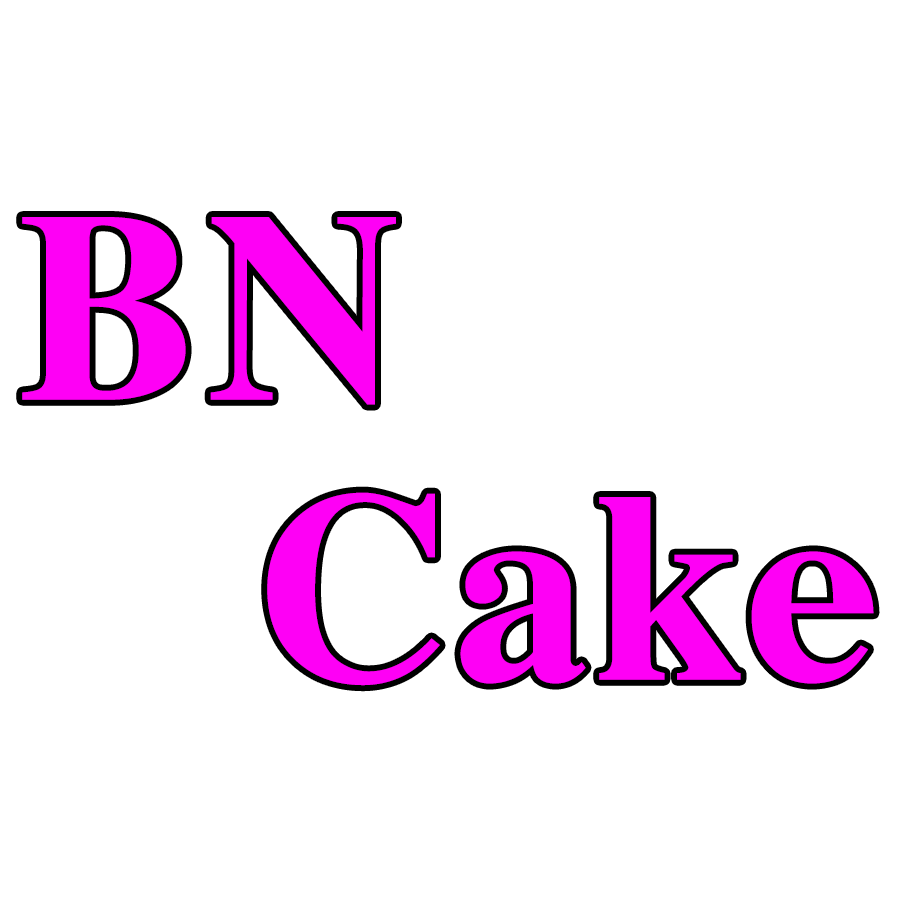

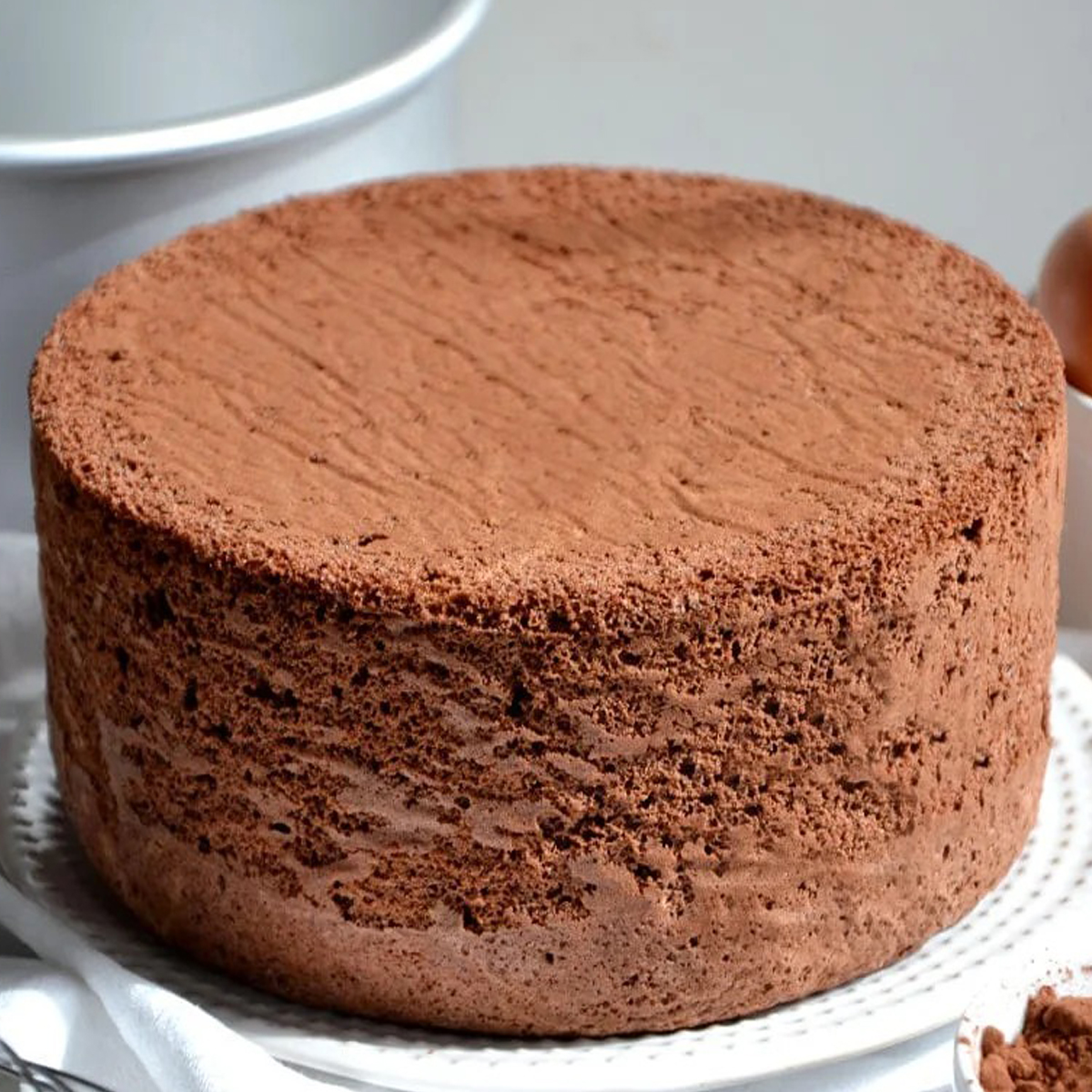


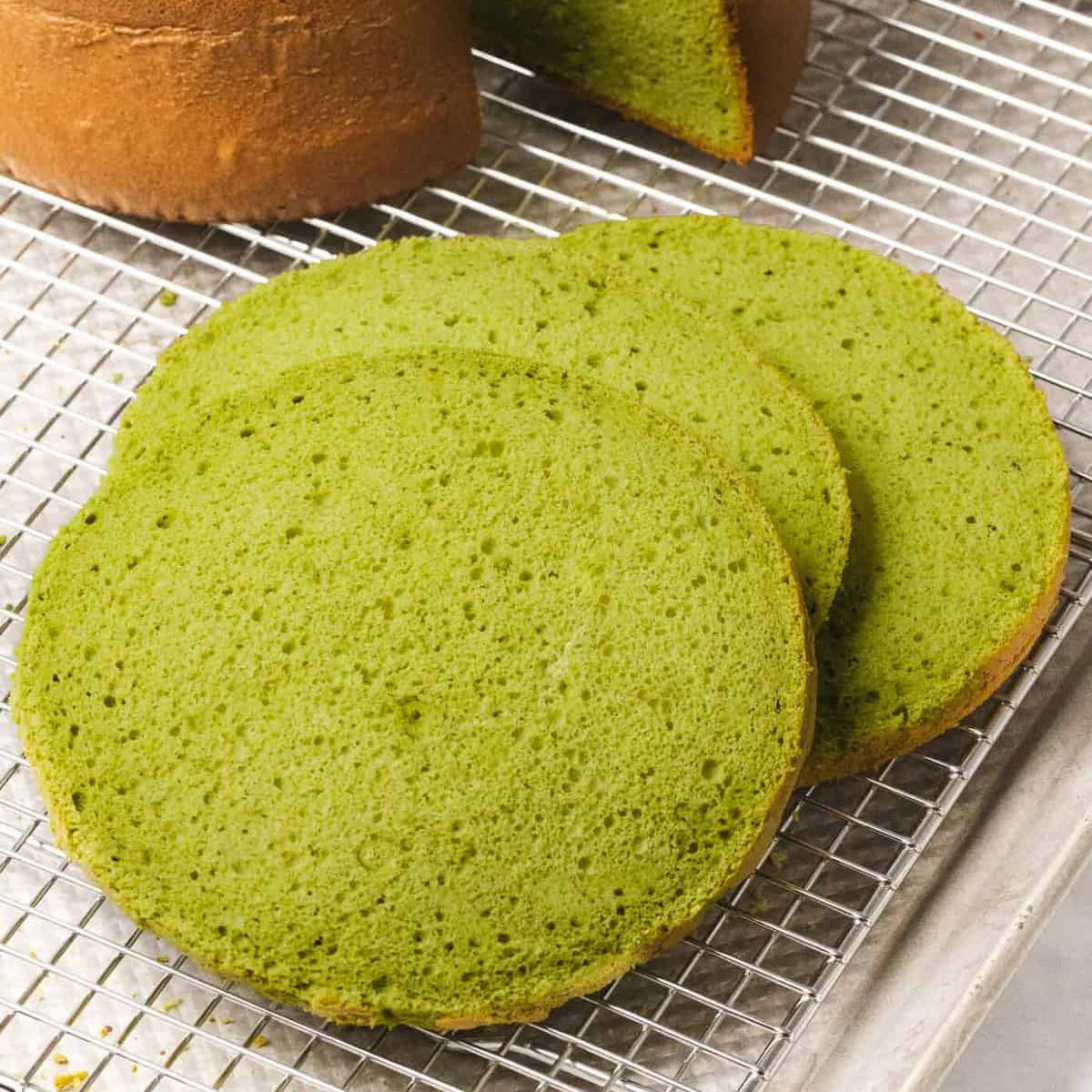
Hey
I am student of baking .
I like your recipe .
Good job dear
Keep it up